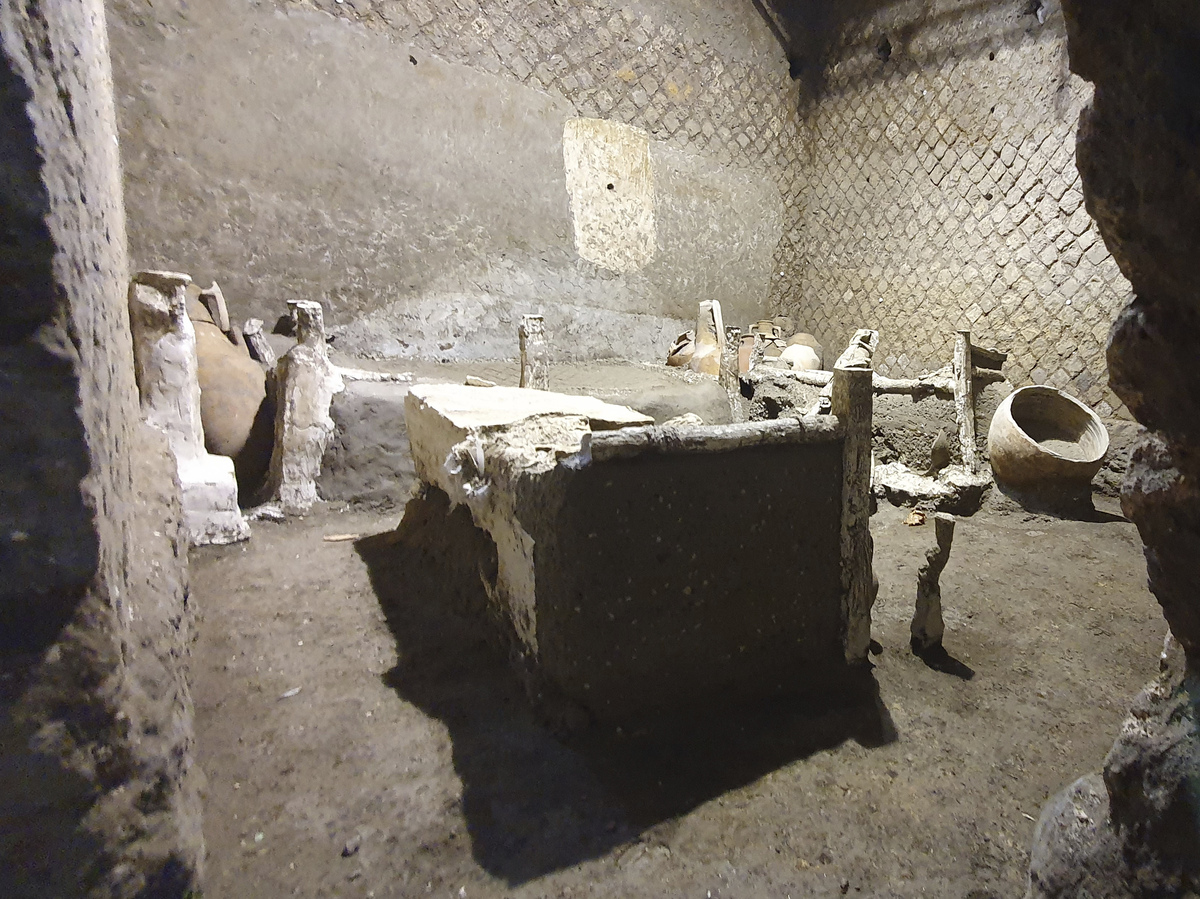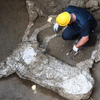
[ad_1]

A view of the latest finding in Pompeii, Italy. Archeologists, excavating a villa amid the ruins of the 79 A.D. volcanic eruption, have discovered a room that served as both a dormitory and storage area.
Parco Archeologico di Pompei via AP
hide caption
toggle caption
Parco Archeologico di Pompei via AP

A view of the latest finding in Pompeii, Italy. Archeologists, excavating a villa amid the ruins of the 79 A.D. volcanic eruption, have discovered a room that served as both a dormitory and storage area.
Parco Archeologico di Pompei via AP
A nearly perfectly intact room that served as a kind of dormitory for enslaved people has been unearthed by archaeologists at the ancient Roman city of Pompeii. The room has three wooden beds, a chamber pot, a wooden chest and several tall Roman jars called amphorae. All of it was covered and preserved in cinerite, a sedimentary rock made mostly of volcanic ash, when Mount Vesuvius erupted in A.D. 79.
The room was found in a villa in Civita Giuliana, a suburb north of the city, where researchers have uncovered several exceptional discoveries in the past few years, including an intact ceremonial chariot and the remains of two victims believed to have been a master and his slave. Officials said Saturday in a statement that this newest discovery provides a “rare insight into the daily reality of slaves.”
The massive explosion of Vesuvius nearly 2,000 years ago has become one of history’s best-known natural disasters, killing thousands and burying Pompeii under 20 feet of ash, essentially stopping the entire city and its inhabitants in one tragic freeze frame. The city is now a UNESCO world heritage site, housing precious information about life long ago.
The room grants us a rare insight into the daily reality of slaves, thanks to the state of preservation of the room and the possibility of creating plaster casts of beds and objects in perishable materials which have left their imprint in the cinerite that covered the structures. pic.twitter.com/Ao9LFxvyc6
— Pompeii Sites (@pompeii_sites) November 6, 2021
Gabriel Zuchtriegel, the director of the site, says this find gives much needed — and largely unknown — context for how the city’s rich depended on the labor of others to prosper. “This is a window into the precarious reality of people who seldom appear in historical sources that were written almost exclusively by men belonging to the elite, and who as a result risk remaining invisible in the great historical accounts,” he said in a statement.
The room is thought to have lodged three workers at the villa who would have carried out everyday work, including maintaining and preparing that impressive chariot found earlier this year. Three beds line the walls — including one smaller than the other two, thought to have perhaps belonged to a child — made from wooden planks and then webbed with ropes. A wooden trunk rests nearby, filled with metal and fabric that appear to be parts of the chariot’s horse harnesses. Tall ceramic jugs are crammed into the corners of the room, suggesting it was also used for storage as well as housing. One small upper window provided light.

A view of the latest finding in Pompeii, Italy. Italy’s culture minister, Dario Franceschini, said the find was “an important discovery that enriches the knowledge of the daily life of ancient Pompeiians, in particular the level of society still little known.”
Parco Archeologico di Pompei via AP
hide caption
toggle caption
Parco Archeologico di Pompei via AP

A view of the latest finding in Pompeii, Italy. Italy’s culture minister, Dario Franceschini, said the find was “an important discovery that enriches the knowledge of the daily life of ancient Pompeiians, in particular the level of society still little known.”
Parco Archeologico di Pompei via AP
“What is most striking is the cramped and precarious nature of this room,” Zuchtriegel continued. “It is certainly one of the most exciting discoveries during my life as an archaeologist, even without the presence of great ‘treasures’ — the true treasure here is the human experience, in this case of the most vulnerable members of ancient society, to which this room is a unique testimony.”
The Italian Ministry of Culture tweeted a video showcasing the room.
“Our knowledge of the daily life of ancient Pompeiians has been enriched,” said Dario Franceschini, Italy’s minister of culture, “particularly of that element of society about which little is known even today.”
[ad_2]
Source link


